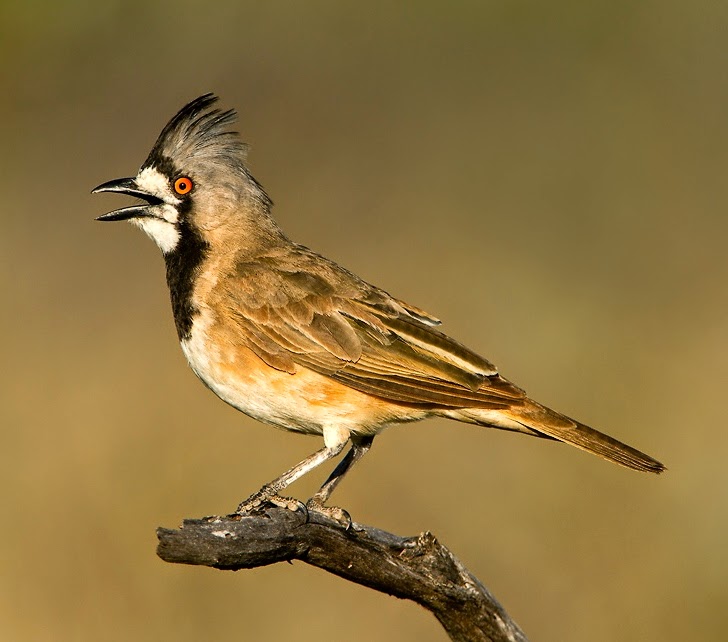 |
| Photo by Eric Tan (Feathers and Photos) |
Common name:
crested bellbird (en); sibilante-de-crista (pt); carillonneur huppé (fr); silbador campanillero (es); haubendickkopf (de)
Taxonomy:
Order Passeriformes
Family Pachycephalidae
Range:
This species is endemic to Australia, being found throughout most of the country, with the exception of the northernmost and easternmost areas.
Size:
These birds are 19-23 cm long and weigh 60-70 g.
Habitat:
The crested bellbird is found in dry scrublands and savannas, including Acacia, Eucalyptus and Spinifex dominated areas.
Diet:
They forage on the ground or among low scrubs, taking invertebrates and seeds.
Breeding:
Crested bellbirds are monogamous but pair bonds only last one season. They breed in August-December and the nest is a deep cup made of twigs and bark, and lined with bark, leaves and plant fibres. It is placed in a fork or hollow in a dead tree, usually less than 2 m above the ground. The female lays 1-4 white or bluish eggs with dark brown and grey blotches. The eggs are incubated by both parents for about 16 days. The chicks fledge about 12 days after hatching.
Conservation:
IUCN status – LC (Least Concern)
This species has a very large breeding range and is reported to be locally common. The population is estimated to de in decline following recorded decreases, probably owing to habitat destruction and fragmentation through land clearance.







